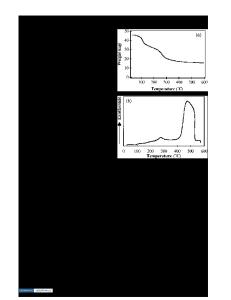Soft Solution Processing: A Strategy for One-Step Processing of Advanced Inorganic Materials
- PDF / 237,179 Bytes
- 9 Pages / 612 x 792 pts (letter) Page_size
- 75 Downloads / 254 Views
Processing: A Strategy for One-Step Processing of Advanced Inorganic Materials
Masahiro Yoshimura, Wojciech L. Suchanek, and Kullaiah Byrappa Introduction The term “materials cycle” is generally used to describe the synthesis of substances from raw materials (sometimes including the synthesis of manufactured raw materials), the fabrication of shaped materials, their use, and their eventual disposal.1 It is well known that all materials are extracted from the earth, then are converted to functional products through various fabrication processes, usually involving a high expenditure of energy, which in turn contributes to environmental problems such as global warming. These materials must later be disposed of or recycled.2 Here we discuss an alternate materials cycle, involving only one step to obtain functional products (see the introductory article by Yoshimura and Livage in this issue). It can be accomplished by the environmentally benign technique of “soft solution processing” (SSP), which is proposed as a strategy for materials processing in the coming century. The objective of materials processing by means of SSP is to fabricate or assemble functional products from technological materials with minimal consumption of energy at a low cost. In this article, we will describe various aspects of SSP, including hydrothermal, solvothermal, MRS BULLETIN/SEPTEMBER 2000
and supercritical processing; wet chemical synthesis (chimie douce); biomimetics, selfassembly, and templating; and sol-gel, electrochemical, and electrodeposition techniques.
Thermodynamic Principles of Advanced Materials Processing Processing of advanced materials generally consists of two steps: (1) the synthesis of substances (ceramic, metallic, organic) that have a particular chemical composition, a physical state including crystal structure, and specific properties; and (2) materials fabrication (i.e., shape-forming and shape-fixing by firing/sintering, pyrolysis, melting, or casting) as shown schematically in Figure 1 (right side). In this regard, it is very difficult to give desired shape, form, and size to inorganic materials, owing to their brittleness. Organic materials, such as polymers and plastics or metallic materials, can be generally deformed when local stresses (above their yield stresses) are applied,3,4 but ceramics are susceptible to brittle fracture.5 The “classical” two-step processing method usually requires high temperatures and consumes a lot of energy, particularly in the case of ceramics.6 More
recent processing routes using a gaseous phase [e.g., chemical vapor deposition (CVD), metalorganic chemical vapor deposition (MOCVD), etc.],7,8 and physical vapor deposition (PVD) methods in a vacuum system [e.g., sputtering, molecularbeam epitaxy (MBE), etc.],7,9 can produce shaped material in a single step, but require even higher energy than standard hightemperature processes. Generally speaking, all of these techniques have resulted in environmental problems because the consumed energy results in exhaust gas(es) or exhaust heat (
Data Loading...










